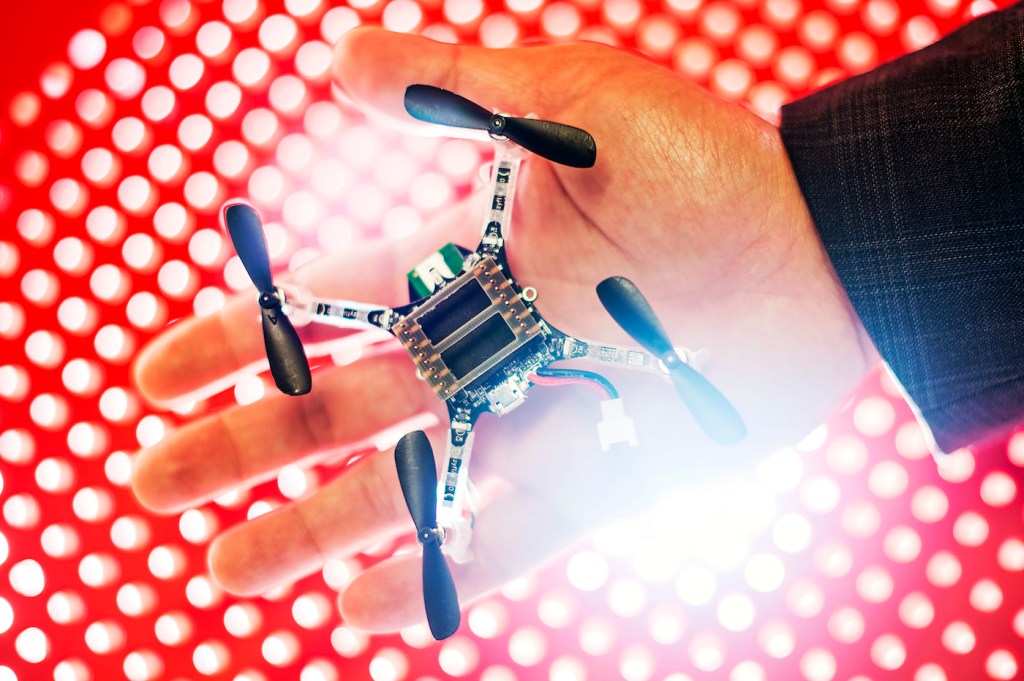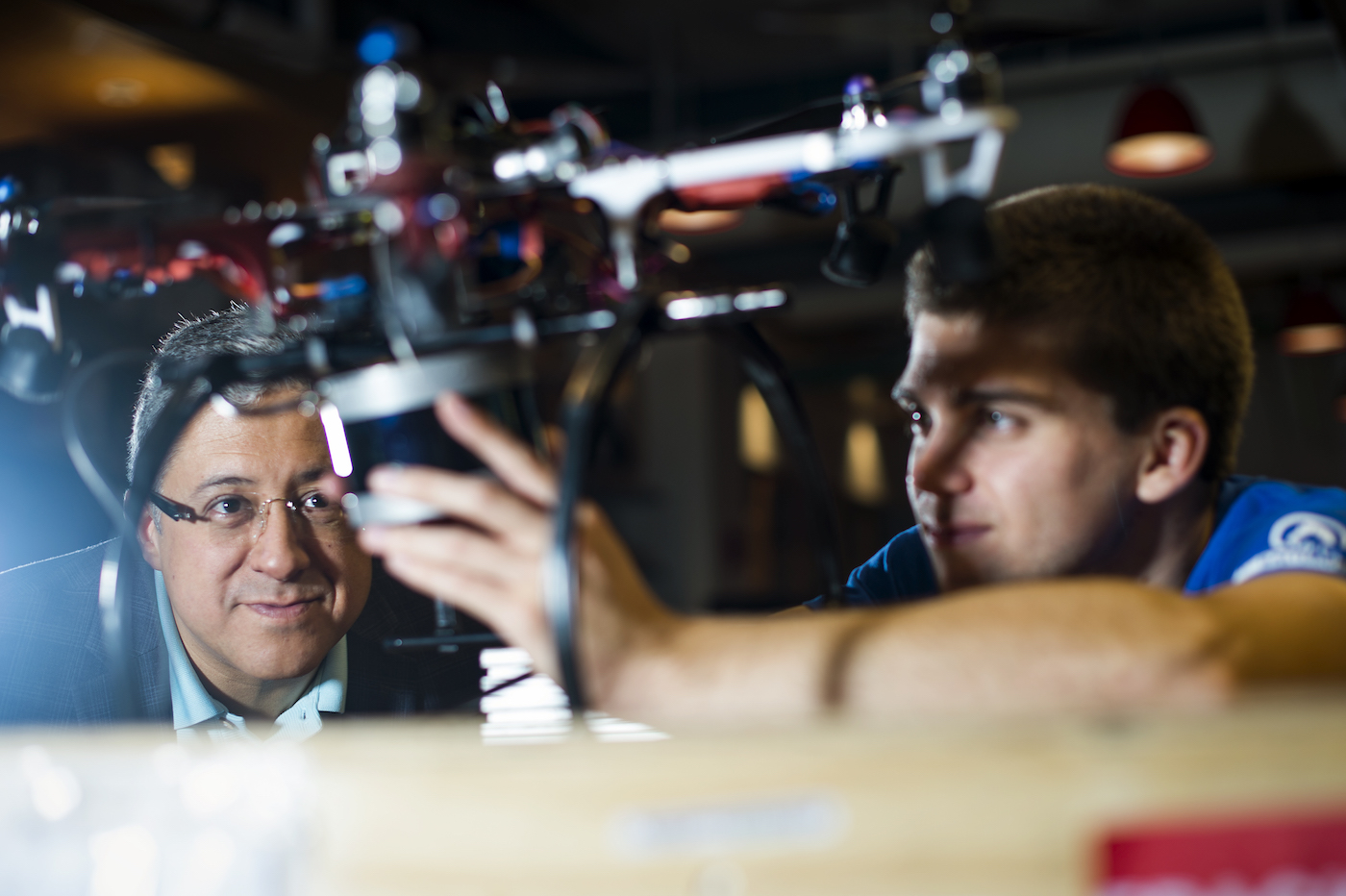Northeastern researchers design robots to assist with disaster relief

Cities and towns all across the globe are reeling from a spate of hurricanes, earthquakes, and typhoons. Human safety is the most immediate concern. But damage assessment is important too.
Quickly following a natural disaster, it’s critical to evaluate the health and strength of a city’s infrastructure. Failure to do so can have catastrophic consequences. For example, it wasn’t the earthquake in Fukushima, Japan, that inflicted most of the devastating destruction. And it wasn’t the tsunami that followed.
“The greatest damage occurred when reactors blew up because of the hydrogen explosions,” said Taskin Padir, associate professor of electrical and computer engineering at Northeastern.

Taskin Padir and his student Nicolas Binford work on a hexi-copter drone. Padir’s lab is developing aerial robots for damage detection after disasters. Photo by Adam Glanzman/Northeastern University
Padir is working with faculty colleagues Jerome Hajjar, CDM Smith Professor and chair of civil and environmental engineering, and Peter Boynton, professor of practice of social science and humanities, to build automated aerial robots to detect infrastructure damage after extreme events. The goal of the project, which is being funded by a seed grant from Northeastern’s Global Resilience Institute, is to “minimize additional disasters caused by disasters,” Padir said, citing the nuclear accident in Fukushima and the explosions from a chemical plant in Houston after Hurricane Harvey as prime examples of cases where his aerial robot could be helpful.
These aerial robots aren’t like the drones providing visual footage for news outlets, Padir said. Those images are helpful in conveying a general sense of the wreckage, but detecting infrastructure damage is a different story. Cracks, fractures, and other structural vulnerabilities are often inconspicuous and can appear innocent to the untrained eye.
“A building may look healthy, but there are certain misalignments and certain cracks that might be problematic later on,” Padir said.

A hexi-copter drone in Taskin Padir’s lab. The ultimate vision is a robot swarm deployed to assist engineers in damage inspection. Photo by Adam Glanzman/Northeastern University
Padir and Hajjar are developing algorithms to program the aerial robots so they will be highly specialized and discerning. One algorithm would allow the robot to automatically detect a structure, like a bridge or a building, and break it down into parts—including its foundation, bearings, and other components. Another algorithm would enable the robot to identify types of damage, such as bent steel, concrete cracks, or corrosion. A third algorithm would program the robot to perform a computational simulation predicting how the structure would respond to the disaster.
The ultimate vision, Hajjar said, is a robot swarm deployed to assist engineers in damage inspection, although that goal is still a few years away from coming to fruition. Right now, the team is refining the robot’s hardware and algorithms so it knows what to look for.
Eventually, Hajjar said the robot may also be able to make recommendations on what buildings are unsafe and uninhabitable. This would make relief efforts safer and more efficient after natural disasters.
“We want to make the process as automated as possible without human intervention, but still anticipate that it will complement what inspectors would be doing,” Hajjar said.




